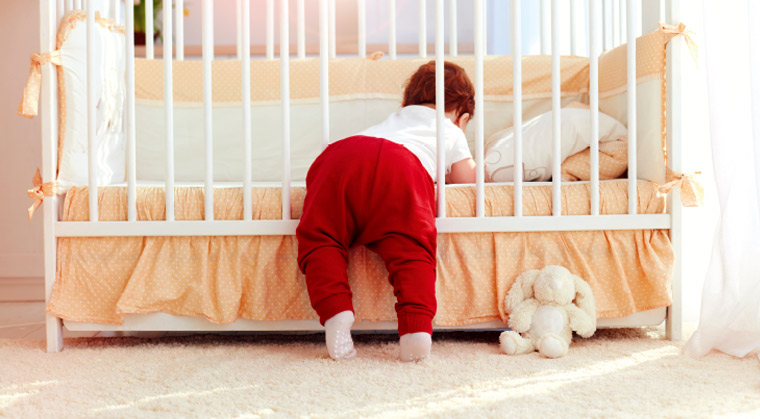Danger in the Nursery


Seemingly innocent baby toys and products — many that are supposed to help baby — may be harmful. Check out the research behind ten different baby products to see how you can minimize their risks or avoid them in the first place.
ANice Cuppa
Mold made headlines all over the parenting world when Craig Beresford decided to investigate what could be causing his daughter’s persistent stomach aches. He pried open the cover of his daughter’s sippy cup with a knife and discovered black mold.
The thought of moldy sippy cups makes our skin crawl, but do they really pose a serious health hazard? In an interview with Healthline, Dr. Claire McCarthy, pediatrician at Boston Children’s Hospital and assistant professor of pediatrics at Harvard Medical School, said that mold growing inside a sippy cup is quite common.
Some types of mold are hazardous, maintains Dr. McCarthy, and even harmless mold can cause irritation when a mold allergy is involved. Still, not all molds are toxic, she points out. “Most children aren’t going to have symptoms of mold ingestion,” said McCarthy.
If your child is, however, experiencing reactions typical to mold allergies, such as coughing, itchy eyes, rashes, and other uncomfortable symptoms, check the sippy cup internally for signs of mold.
To clean mold from your kid’s sippy cup, fully disassemble the cup, wash the parts in hot soapy water and let dry completely before reassembly. Since some cups are not meant to be disassembled (because of choking concerns) and may need prying open with a knife, you might want to research ease of disassembly before buying. Tommee Tippee sells cups with a clear plastic valve to help you easily spot mold. And when you do, you can request a replacement valve.
Clear out the crib
“Is the baby sleeping?” is practically the first thing every new mother is asked. Parents shell out big bucks for practically anything that guarantees them more much-needed rest. Sleep positioners, in particular, sound like a new parents’ dream. These wedged pillows or mattresses that are designed to keep baby sleeping on his back often promise to reduce risk of SIDS.
Yet the opposite is true. In 2010, the Consumer Product Safety Commission (CPSC), a government agency committed to improving the safety of products, released a warning about this product after receiving reports of infant deaths related to sleep positioners and dozens of accounts of infants who were found in unsafe positions when using sleep positioners.
Simplify your crib accessories by following the American SIDS Institute’s guidelines: “A bare crib, with just a well-fitting crib mattress and a fitted sheet, is the safest sleep space for baby.” Spare yourself the expense of pillows, positioning devices, bumper pads, excessive covering, crib bumpers that are not mesh or breathable material, crib tents, or anything that can get close to a baby’s face or potentially entrap a baby.
Bumbo bumble
As baby is awake for longer periods and beginning to play, parents may be eyeing a Bumbo Seat, a specialized chair that supports young babies who can’t yet sit on their own. And while therapists warn that the Bumbo Seat actually discourages healthy physical development, health experts warn about its safety risks.
The “secure” impression the Bumbo Seat makes is deceiving; babies can escape, fall out, or tip the seat over. The last mass recall for four million Bumbo Seats was in August 2012, following 50 incidents of babies falling out of the seats and at least 19 cases of skull fractures.
If you do own a Bumbo Seat, always leave it at floor level. The CPSC recently issued a warning about the risk of injuries to babies sitting in Bumbo baby seats placed on a table, a chair, or any other elevated surface.
(Excerpted from Family First, Issue 607)
Oops! We could not locate your form.







